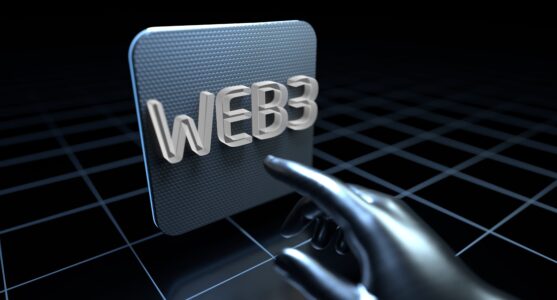Imagine an internet where users own their data, middlemen are obsolete, and applications run on decentralized networks, not corporate servers. This is the vision of Web 3.0—an evolution that promises to redefine how we interact online.
While the term “Web 3.0” may sound like just another tech buzzword, it actually reflects a fundamental shift in the structure, governance, and philosophy of the internet. But what exactly is Web 3.0, how does it differ from the earlier versions of the web, and why should you care?
Let’s take a deep dive into the decentralized internet and uncover what makes Web 3.0 a revolutionary concept.
From Web 1.0 to Web 3.0: A Quick Evolution
Web 1.0 – The Static Web (1990s to early 2000s)
Web 1.0 was the first iteration of the internet, characterized by static HTML pages. Content was published by a handful of creators, and users could only read or view what was available—there was little to no interaction. It was a digital version of a library: informative, but passive.
Web 2.0 – The Social Web (2004 to present)
Web 2.0 marked a major shift. Platforms like Facebook, YouTube, and Twitter turned the internet into a social, interactive space. Users could create content, interact with others, and even build businesses online. However, this interactivity came at a cost: centralization.
A handful of tech giants began collecting and controlling vast amounts of user data. Monetization models centered around advertising, and the user became the product. Privacy, data ownership, and autonomy were often compromised.
Enter Web 3.0: A Decentralized Future
Web 3.0 is the next logical step—an internet that is decentralized, permissionless, and user-owned. It aims to return power to individuals by leveraging blockchain technology, smart contracts, and cryptographic systems.
This version of the web seeks to eliminate the need for intermediaries by distributing control among users and developers. Instead of being owned and operated by centralized corporations, Web 3.0 platforms are typically governed by communities and fueled by token-based economies.
Key Characteristics of Web 3.0
1. Decentralization
Rather than data being stored on centralized servers, Web 3.0 uses distributed networks where no single entity has total control. Blockchain, peer-to-peer storage, and decentralized nodes power these systems.
2. User Ownership of Data
In Web 3.0, users retain ownership of their personal information and digital assets. They can choose to share, sell, or monetize their data directly.
3. Trustless and Permissionless
There’s no need to rely on third parties to verify or authorize actions. Smart contracts—self-executing pieces of code—enforce rules automatically, removing the need for centralized enforcement.
4. Token-Based Incentives
Cryptographic tokens—like cryptocurrencies or non-fungible tokens (NFTs)—are used to incentivize user behavior, reward content creation, and govern protocols. These tokens often give holders a stake in the future of the network.
5. Interoperability and Open Protocols
Web 3.0 applications are built on open-source software, allowing them to interact seamlessly across networks and platforms.
Technologies Behind Web 3.0
Web 3.0 is not a single tool or software—it is a stack of technologies that work together to build decentralized systems.
Blockchain
The backbone of Web 3.0. Distributed ledgers like blockchains securely record transactions and interactions without requiring central oversight Ethereum, Polkadot, and Solana are popular platforms powering decentralized applications (dApps).
Smart Contracts
Smart contracts are automated programs that execute agreements without intermediaries. They’re at the heart of most decentralized finance (DeFi) platforms and NFTs.
Cryptographic Tokens
Tokens serve as a medium of exchange, a store of value, or a governance tool in decentralized networks. They can represent anything from voting rights to ownership of digital art.
Decentralized Storage
Technologies like IPFS (InterPlanetary File System) and Filecoin store data across distributed nodes, reducing the risks of centralized failure or censorship.
dApps (Decentralized Applications)
Developers build dApps on decentralized networks, unlike traditional apps. They run autonomously, often governed by their users through token-based voting mechanisms.
Real-World Examples of Web 3.0 in Action
It isn’t just theoretical—it’s already changing how people interact online across industries.
Decentralized Finance (DeFi):
Platforms like Aave and Compound allow users to lend, borrow, and earn interest without banks. Transactions are instant, transparent, and governed by smart contracts.
Non-Fungible Tokens (NFTs):
Web 3.0 has enabled artists and creators to tokenize their work and sell it directly to audiences. Smart contracts ensure royalties are automatically paid on resales.
Decentralized Autonomous Organizations (DAOs):
Smart contracts and community voting run internet-native organizations known as DAOs. They operate without a traditional leadership structure and use tokens for governance.
Social and Content Platforms:
Projects like Mirror and Lens Protocol are reimagining publishing and social networking by rewarding users and creators directly for engagement.
Challenges and Controversies
As promising as Web 3.0 sounds, it’s not without challenges.
1. Usability and Accessibility
The average user still finds wallets, private keys, and blockchain interfaces confusing. For Web 3.0 to reach mass adoption, user experience needs dramatic improvement.
2. Security Risks
Smart contracts are susceptible to bugs and exploits. Hackers have stolen billions from poorly designed protocols, raising concerns about the reliability of decentralized systems.
3. Scalability
Blockchains like Ethereum often face congestion and high transaction fees. Layer 2 solutions and alternative chains are attempting to solve this, but issues remain.
4. Environmental Concerns
Proof-of-work blockchains like Bitcoin consume significant energy. However, newer models like proof-of-stake offer more sustainable alternatives.
5. Regulation
Meanwhile, governments and regulatory bodies are still defining how to approach decentralized networks, thereby raising uncertainty about compliance and oversight.
The Bigger Picture: Why Web 3.0 Matters
At its core, Web 3.0 represents a shift in power. It challenges the monopolistic structures of the current internet and opens the door to systems that are more democratic, transparent, and aligned with users’ interests.
It empowers individuals not just as consumers but as contributors, owners, and stakeholders in the platforms they use daily.
Although it remains to be seen whether Web 3.0 will reach its full potential, one thing is certain: the push for a more equitable and decentralized web has already begun—and it is rapidly gaining traction.
Final Thoughts
Web 3.0 is more than a technological upgrade—it’s a philosophical realignment. It challenges the assumptions of the past two decades and offers a compelling vision of an internet where users regain control.
As this decentralized ecosystem continues to evolve, one question remains at the center of the conversation:
Considering the opportunity, how would you choose to shape the future of the internet?







